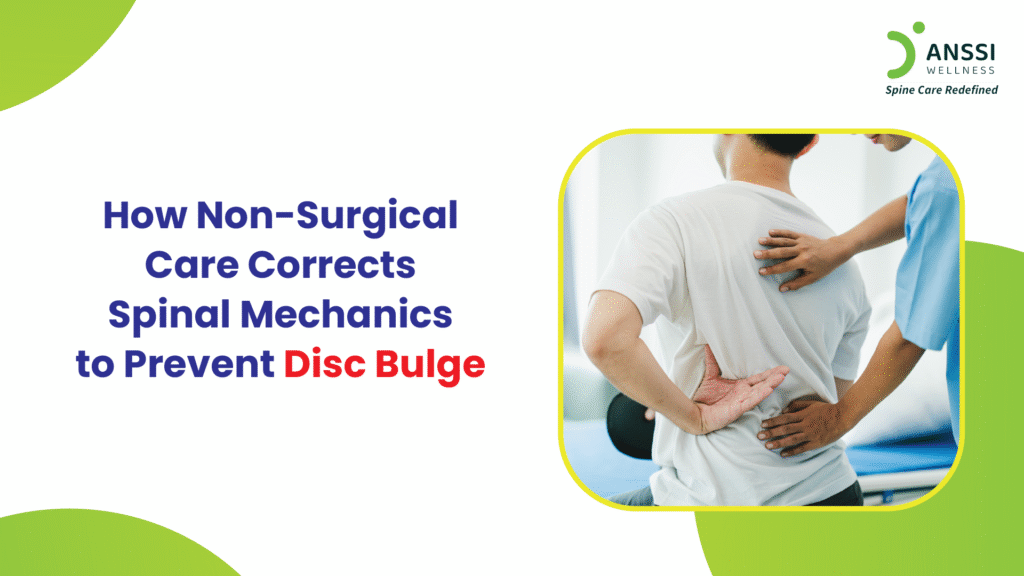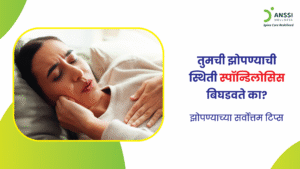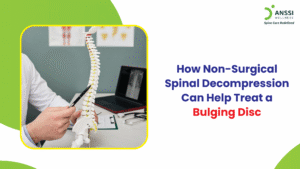Back pain has become one of the most common health concerns in today’s world, affecting millions of people across all age groups. Among its leading causes is a condition known as a disc bulge. It’s when one of the spinal discs protrudes out of its normal position, pressing on nerves and causing discomfort, stiffness, or even radiating pain.
While many assume that surgery is the only way to fix this problem, modern non-surgical treatments offer an effective and natural alternative. Understanding how spinal mechanics work and how non-surgical care restores them is key to preventing and managing disc bulges safely.
Understanding Spinal Mechanics
The spine is a complex, flexible structure composed of 33 vertebrae stacked on top of each other, separated by soft, cushion-like intervertebral discs. These discs act as shock absorbers, allowing smooth movement and protecting the vertebrae from impact. Each disc has a tough outer ring (annulus fibrosus) and a soft gel-like centre (nucleus pulposus).
When your spine is properly aligned, the weight and pressure on the discs are evenly distributed. However, when posture, movement, or lifestyle habits disrupt this balance, the spinal mechanics are altered. This misalignment increases pressure on certain discs, making them bulge outward; a condition commonly referred to as a disc bulge or prolapsed disc.
Poor spinal mechanics can result from multiple factors, including long hours of sitting, slouching, repetitive movements, poor lifting habits, or even an uneven gait. Over time, these habits strain specific spinal segments, leading to injury, muscle tightness, and gradual disc degeneration.
How Misalignment Leads to Disc Bulge
The spine functions as a unified system. When one part goes out of alignment, it impacts the surrounding structures. Even a slight shift in posture can significantly alter how pressure is distributed along the spine.
For example:
- When you sit hunched over a laptop, your head moves forward, increasing the load on the cervical spine (neck).
- Similarly, sitting for long hours without back support compresses the lumbar spine (lower back).
These small, repetitive stresses weaken the outer layer of the disc and push the inner material outward, creating a bulge.
As the disc bulges, it may compress nearby spinal nerves, leading to pain, numbness, tingling, or weakness; commonly experienced as sciatica (pain radiating down the leg) or cervical radiculopathy (pain radiating into the arm).
Other contributing factors include dehydration, obesity, lack of physical activity, and muscle imbalances. Dehydrated discs lose flexibility, making them more prone to injury, while weak core muscles fail to provide adequate spinal support. Over time, these combined issues lead to chronic misalignment and recurring pain.
The Role of Non-Surgical Care in Correcting Spinal Mechanics
While surgery may seem like an immediate fix for a disc bulge, it often comes with risks, a long recovery period, and the possibility of recurrence. Non-surgical care, on the other hand, focuses on restoring natural spinal alignment and reducing disc pressure without invasive procedures.
Here’s how various non-surgical treatments help correct spinal mechanics and promote long-term spine health:
1. Non-Surgical Spinal Decompression Treatment
One of the most advanced and effective non-surgical treatments available today is non-surgical spinal decompression treatment. This USA protocol-based procedure uses a computer-controlled table to gently stretch the spine in a targeted manner.
The gentle decompression mechanism creates negative pressure within the spinal discs, allowing the bulging portion to retract naturally. This process reduces pressure on the nerves and increases the flow of nutrients, oxygen, and fluids into the disc, promoting healing and rehydration.
By relieving compression and restoring proper spacing between vertebrae, spinal decompression helps realign the spine and correct mechanical imbalances. It’s a safe, drug-free, and needle-free procedure that provides lasting relief from chronic back and neck pain.
2. Physiotherapy and Core Strengthening
Physiotherapy plays a crucial role in maintaining proper spinal mechanics. Targeted exercises help strengthen core muscles, which are the deep muscles of the abdomen, pelvis, and back that support spinal alignment.
A strong core reduces stress on the spinal discs and prevents abnormal movements that lead to misalignment. Physiotherapists also guide patients through posture correction, flexibility exercises, and mobility drills that improve overall spinal balance.
Regular physiotherapy not only helps treat existing pain but also acts as a preventive measure against future disc problems.
3. Postural Correction and Ergonomics
Many disc-related issues stem from poor posture during everyday activities like sitting, standing, and working. Simple ergonomic adjustments can dramatically reduce spinal stress.
- While sitting: Keep your back straight and supported with your feet flat on the floor.
- While standing: Distribute weight evenly on both feet.
- At work: Ensure your computer screen is at eye level and avoid leaning forward for prolonged periods.
Ergonomic furniture, lumbar support cushions, and adjustable chairs can make a big difference in maintaining spinal alignment throughout the day.
4. Lifestyle Modifications for Spinal Health
Prevention begins with healthy habits.
- Maintaining a balanced diet, staying hydrated, and incorporating low-impact exercises like walking, swimming, or yoga can help preserve disc elasticity and strength.
- Hydration is particularly important since spinal discs rely on water to maintain their height and flexibility.
- Weight management also reduces the load on the lower back.
- Quitting smoking enhances blood flow and nutrient delivery to spinal tissues.
The Benefits of Non-Surgical Correction
Non-surgical care focuses on the root cause of the problem rather than just relieving symptoms. By restoring spinal alignment and improving mechanics, these treatments help the discs heal naturally. Patients often report reduced pain, improved mobility, and better posture, all without the risks associated with surgery.
Moreover, non-surgical treatments are personalised. They adapt to each individual’s condition, ensuring optimal results with minimal downtime. Over time, these treatments not only treat existing disc bulges but also strengthen the spine against future injuries.
About ANSSI:
ANSSI Wellness focuses on improving the quality of life for patients suffering from spinal issues, aiming to provide relief where other conventional treatments have failed. Through advanced Non-Surgical Spinal Decompression Treatment, ANSSI is committed to helping patients avoid surgery and recover in a safe, effective, and compassionate environment.
Connect with ANSSI Wellness on LinkedIn, Instagram, and Facebook for expert guidance.




